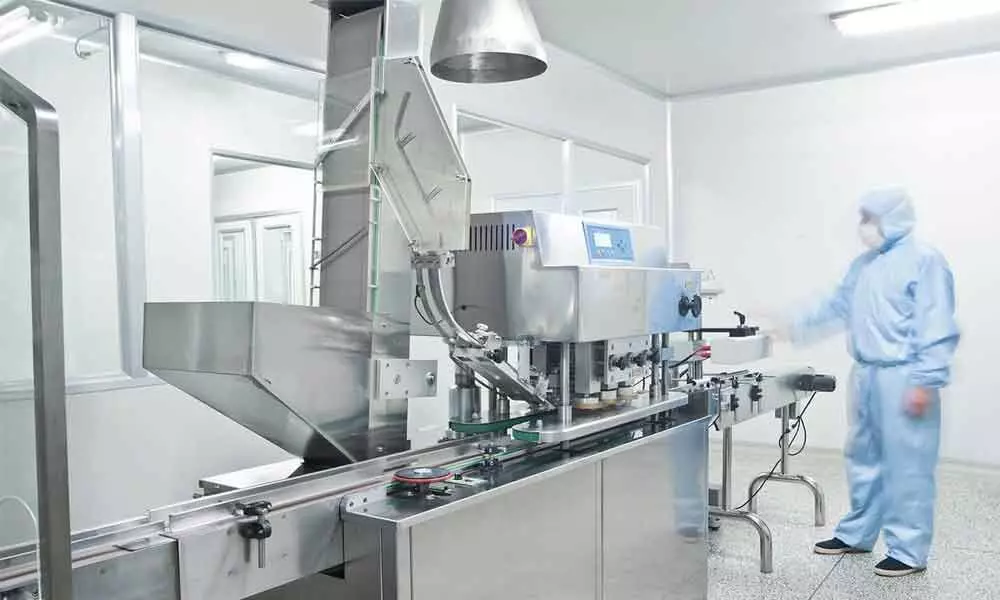Does pharma industry need a separate central ministry?
Does the pharmaceutical industry in India need a separate central ministry? As the Indian pharmaceutical industry has been growing by leaps and bounds
image for illustrative purpose

Does the pharmaceutical industry in India need a separate central ministry? As the Indian pharmaceutical industry has been growing by leaps and bounds, the industry as well as the experts in the field has been demanding to the government to form a separate central ministry exclusively for the pharmaceutical and medical device industry in the country.
Presently, both the pharmaceutical and medical device sectors are regulated by different ministries and agencies. While all the administrative and pricing related policies are regulated by the Union Ministry of Chemicals & Fertilizers, the issues related to quality of the medicines produced and marketed in the country are regulated by the Union Ministry of Health & Family Welfare. Policies related to investment and IPR as well as that of exports are regulated by the Union Ministry of Commerce & Industry.
This multiple regulatory mechanism very often poses hurdles to the growth of these sectors to its full potential. This was very much evident during the last two years ever since the Covid-19 pandemic hit the entire length and breadth of the world and all the nations were looking to India for medicines. While all these nations were asking India for medicines such as hydroxylchloroquine, azithromycin, paracetamol, etc as well as medical devices including PPEs to contain this highly infectious disease which has taken a toll of almost two million precious lives across the world, India was found fumbling to export these medicines. Of course, things would have been different had there been a separate ministry for the pharma and medical devices industry.
The Indian pharmaceutical industry has undoubtedly come a long way from a mere Rs10 crore industry in 1948 to more than Rs 2 lakh crore at present to adorn the epithet of 'the pharmacy of the world', exporting affordable quality medicines to more than 200 countries in the world, including the developed countries like the US and Europe. Of course, it is a great feat for a sector which was dominated by the multinational drug companies until 1970's. More importantly, the leapfrog jump of the Indian pharmaceutical industry, and of late that of the medical devices industry, is continuing as the industry since then did not look back and, in fact, it is literally cruising to capture new heights. Surprisingly, the pharmaceutical industry in the country achieved the current global status without having an ideal policy and regulatory environment on account of the fact that the industry is being controlled by different ministries and agencies.
It is not that the Indian government is not seized of the issue. In fact, ever since the present government came to power at Centre in 2014, there have been renewed talks of a separate ministry for pharmaceuticals and medical devices. The then Union Minister for Chemicals & Fertilizers late Ananth Kumar had indicated on more than one occasion that the Central government is seriously considering to form a dedicated ministry for pharmaceuticals and medical devices. The minister had indicated about the move first in 2015 and then reiterated the same in 2017 and the government held discussions with different stakeholders. The matter was also brought to the notice of the Prime Minister's Office and the PMO is reported to have convinced of such a need in the context of huge potential for growth in these two industry segments in the coming years. But since then, the issue has been gathering dust in the shelves of the central government.
There is definitely an urgent need to create an appropriate regulatory environment for the growth of the pharmaceuticals and medical devices sectors in the country. The Covid-19 pandemic has once again brought the Indian pharmaceutical and medical devices industry into limelight and has underscored the need to have an exclusive ministry for these two sectors.
(The author is freelance journalist with varied experience in different fields)

